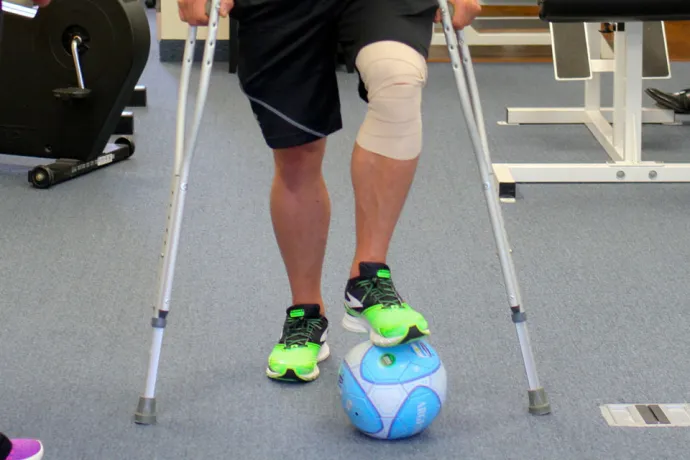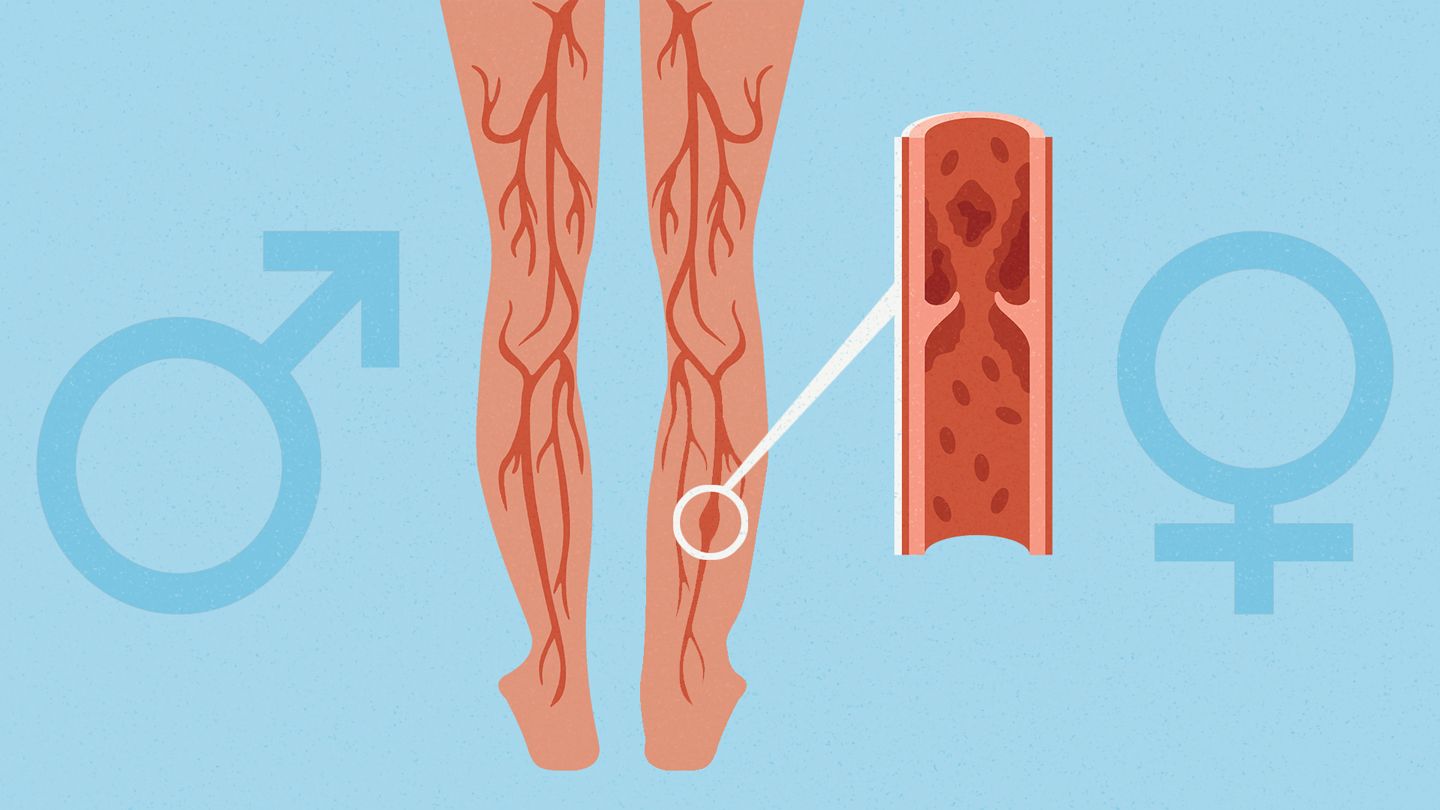Your risk of Alzheimer’s disease can be determined by your calf muscles. Higher levels of lean muscle mass might protect against Alzheimer’s disease.
In a new study, researchers have found that people with more lean muscle mass are less likely to develop Alzheimer’s disease. This suggests a link between muscle mass and brain health. It is important to understand the relationship between muscle health and cognitive function in order to develop strategies for preventing Alzheimer’s disease.
This research highlights the importance of maintaining muscle strength and suggests that exercises targeting the calf muscles may help decrease the risk of developing Alzheimer’s disease. By promoting muscle health, we may be able to protect against cognitive decline and improve overall brain function.

Credit: www.menshealth.com
Understanding Calf Muscles
The calf muscles are an essential part of the lower leg anatomy. Composed of the gastrocnemius and soleus muscles, they play a crucial role in various activities such as walking, running, and jumping. These muscles are responsible for flexing the foot and enabling us to push off the ground. While they may seem unrelated, recent studies have found a surprising link between the health of our calf muscles and the risk of developing Alzheimer’s disease.
What Calf Muscle Pain Signifies
Calf muscle pain is a common symptom and can indicate various underlying issues. Mild pain in the calves is often caused by strain or leg cramps. However, persistent or severe pain in the calf muscles could be a sign that the lower leg muscles aren’t receiving enough blood flow. This can be an indication of poor vascular health, which has been linked to an increased risk of Alzheimer’s disease.
Causes And Remedies For Calf Doms
Calf Delayed Onset Muscle Soreness (DOMS) is a condition characterized by muscle pain and stiffness that typically occurs 24 to 48 hours after intense exercise. There are several proposed mechanisms for the development of DOMS, including muscle damage, inflammation, and enzyme efflux. To alleviate calf DOMS, it is recommended to rest the leg, apply ice to reduce swelling, use compression wraps, and elevate the affected leg to reduce fluid buildup.
Moreover, recent research has highlighted the potential connection between calf muscles and dementia risk. Studies have shown that training the calf muscles can improve diastolic blood pressure and increase brain blood flow, which may help prevent the onset of dementia.
In conclusion, understanding the importance of calf muscles goes beyond their role in leg movement. They can provide valuable insights into an individual’s health, particularly in relation to Alzheimer’s disease. If you experience calf muscle pain or discomfort, it is essential to seek medical advice and consider proactive measures to maintain vascular health.

Credit: www.neurology.org
Calf Muscles And Dementia Risk
Your calf muscles may play a crucial role in determining your risk of developing Alzheimer’s disease. Recent research has found a fascinating association between the strength and health of these muscles and the onset of dementia. In this article, we delve into the intriguing connection between calf muscles and dementia risk, exploring factors such as the impact of blood pressure and the potential for prevention through targeted calf muscle training.
Exploring The Association Of Calf Muscles And Blood Pressure With Dementia
Studies have discovered a significant link between calf muscle health, specifically the soleus muscle, and blood pressure in relation to dementia risk. The soleus muscle is located in the back of the lower leg, responsible for pushing blood back up to the heart. When this muscle is weak or lacks proper blood flow, it can lead to higher blood pressure, which is a known risk factor for dementia.
Researchers have found that raising diastolic blood pressure through daily soleus muscle exercises can increase the risk of developing dementia. This highlights the importance of maintaining strong and healthy calf muscles to promote proper blood flow and reduce the risk of cognitive decline.
Preventing Dementia Through Calf Muscle Training
The good news is that it is possible to lower the risk of dementia by strengthening and training your calf muscles. Targeted exercises that focus on the calf muscles, such as calf raises and stretches, can improve muscle strength and increase blood flow. By doing these exercises regularly, you can potentially enhance diastolic blood pressure and promote better brain health.
To prevent dementia through calf muscle training, consider incorporating simple exercises into your daily routine. Calf raises, where you lift your heels off the ground and then lower them back down, are an effective way to activate and strengthen the calf muscles. Additionally, calf stretches such as standing on a step and lowering your heels below the step level can help improve flexibility and circulation in the lower legs.
Remember, just like any other muscle in your body, your calf muscles need regular exercise to stay strong and healthy. By prioritizing your calf muscle health, you may be proactively reducing your risk of developing Alzheimer’s disease and other forms of dementia.
Muscle Strength And Alzheimer’s
The Relationship Between Muscle Strength And Alzheimer’s Risk
According to recent studies, there appears to be a significant relationship between muscle strength and the risk of developing Alzheimer’s disease. Researchers have found that individuals with weaker calf muscles may be more susceptible to developing cognitive decline and Alzheimer’s later in life. This relationship may be attributed to various factors, including reduced blood flow to the brain and decreased overall physical activity. By understanding this connection, we can potentially take steps to reduce our risk and protect our brain health.
The Role Of Lean Muscle Mass In Decreasing Alzheimer’s Risk
Lean muscle mass also plays a crucial role in decreasing the risk of Alzheimer’s disease. Having a higher level of lean muscle mass can help protect against cognitive decline and reduce the chances of developing Alzheimer’s later in life. This is because muscle mass is associated with improved blood flow to the brain, enhanced overall physical fitness, and increased production of brain-derived neurotrophic factor (BDNF), which is crucial for maintaining brain health. Therefore, it is important to prioritize maintaining and building lean muscle mass through regular physical exercise and strength training.
Credit: www.nmrnj.com
Muscle Fat And Cognitive Decline
Did you know that your calf muscles can provide valuable insight into your risk of developing Alzheimer’s disease? Recent research has shown a surprising link between muscle fat and cognitive decline. In this article, we will explore two important aspects of this connection: thigh muscle fat as an indicator of cognitive decline risk and the surprising link between muscle fat and dementia.
Thigh Muscle Fat As An Indicator Of Cognitive Decline Risk
Studies have found that the amount of fat stored in the thigh muscles can be a potential indicator of an individual’s risk of cognitive decline and Alzheimer’s disease. This is due to the fact that excess fat in the muscles leads to increased inflammation and oxidative stress, which can damage brain cells and impair cognitive function. Specifically, researchers have found that individuals with higher levels of thigh muscle fat are more likely to experience memory loss, difficulty concentrating, and other cognitive impairments associated with Alzheimer’s disease.
The Surprising Link Between Muscle Fat And Dementia
While it may seem unusual, there is a strong correlation between muscle fat and the development of dementia. This connection is primarily attributed to the role of muscle in maintaining healthy blood pressure levels. Research has shown that the calf muscles, in particular, play a crucial role in regulating blood pressure. When these muscles are weak or contain excessive fat, they are less effective in pumping blood back to the heart, causing an increase in blood pressure.
Elevated blood pressure, in turn, is a well-established risk factor for dementia and Alzheimer’s disease. The link between muscle fat and dementia arises from the fact that weak or fatty calf muscles lead to higher blood pressure, which can impair blood flow to the brain and increase the risk of cognitive decline. Furthermore, the inadequate blood flow resulting from impaired muscle function prevents the delivery of vital nutrients and oxygen to brain cells, contributing to their degeneration and cognitive impairment.
Research suggests that addressing muscle fat through exercise and maintaining a healthy lifestyle may help reduce the risk of Alzheimer’s disease and dementia. By strengthening the calf muscles and reducing excess fat, individuals can improve blood flow and circulation, thereby reducing the risk of cognitive decline and promoting brain health.
Physical Activity And Dementia Prevention
Physical activity plays a crucial role in reducing the risk of Alzheimer’s disease and other forms of dementia. Several studies have shown a significant link between regular exercise and cognitive health, highlighting the positive impact it can have on brain function. When it comes to dementia prevention, physical activity is a powerful tool that can help improve brain health and reduce the risk of cognitive decline.
Engaging in regular physical activity can significantly reduce the risk of developing Alzheimer’s disease and other forms of dementia. Here are some recommendations for incorporating physical activity into your lifestyle to support brain health:
- Start with moderate-intensity exercises such as brisk walking, swimming, or cycling. These activities can help improve cardiovascular health and increase blood flow to the brain.
- Aim for at least 150 minutes of moderate-intensity aerobic activity per week or 75 minutes of vigorous-intensity activity. Spread the activity throughout the week for maximum benefits.
- Incorporate strength training exercises into your routine to improve muscle mass and overall strength. This can include exercises targeting your calf muscles, such as calf raises or calf stretches.
- Try to engage in activities that also challenge your coordination and balance, such as yoga or tai chi. These activities can help improve cognitive function and reduce the risk of falls.
- Make physical activity a social event by joining group fitness classes or finding a workout buddy. This can help keep you motivated and make exercise more enjoyable.
- Remember to consult with your healthcare provider before starting any new exercise program, especially if you have any pre-existing health conditions.
By incorporating regular physical activity into your lifestyle, you can significantly reduce the risk of developing Alzheimer’s disease and other forms of dementia. It’s never too late to start making positive changes to support your brain health, and taking care of your calf muscles is just one way to do so.
Frequently Asked Questions Of How Your Calf Muscles Can Determine Your Risk Of Alzheimer’s Disease
What Is The Link Between Muscle Mass And Alzheimer’s?
The link between muscle mass and Alzheimer’s is that higher levels of lean muscle can help protect against the disease.
What Does Pain In The Upper Calf Mean?
Pain in the upper calf may indicate a strain or leg cramps. Severe or persistent calf pain could be a sign of poor blood flow to the muscles.
Why Are Calf Doms So Bad?
Calf DOMS can be so bad due to factors like lactic acid, muscle damage, inflammation, and more. Resting, icing, compression, and elevation can help alleviate soreness in your calves after a workout. Taking care of your calf muscles can even help prevent dementia and Alzheimer’s disease.
How Do You Fix Doms In Your Calves?
To fix DOMS in your calves, you can follow these steps: 1. Rest: Avoid putting weight on your leg. 2. Ice: Apply ice to decrease pain and swelling. 3. Compression: Use elastic wraps like Ace bandages to prevent inflammation. 4.
Elevation: Prop up your leg to reduce fluid buildup in the injured tissue.
Conclusion
Recent research suggests a surprising link between your calf muscles and your risk of Alzheimer’s disease. Studies have found that higher levels of lean muscle mass, especially in the calves, may provide some protection against the development of Alzheimer’s. This highlights the importance of regular physical exercise and strength training in maintaining cognitive health.
So, take care of your calf muscles and reduce your risk of Alzheimer’s disease.
